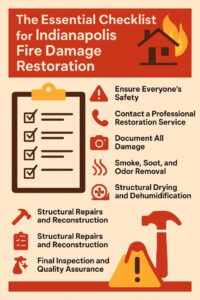Rhinoplasty, whether for cosmetic enhancement or medical reasons, requires time for recovery. One of the most common questions patients ask is: “When can I return to work?” Balancing your desire for a quick return to routine with the need for proper healing is crucial. If you’re considering Rhinoplasty in Islamabad, understanding the recovery timeline will help you plan your time off and ensure a smooth, stress-free healing process.
Table of Contents
ToggleUnderstanding the Rhinoplasty Recovery Timeline
Rhinoplasty is a surgical procedure that reshapes the nose by modifying the bone, cartilage, or both. Since this involves delicate structures, your body needs sufficient time to heal properly.
The timeline for returning to work varies depending on:
- The type of rhinoplasty performed (open vs. closed technique)
- The complexity of the procedure
- Your overall health and healing ability
- The nature of your job (desk-based or physically demanding)
Here’s a general breakdown of what recovery looks like:
Week 1: The Critical Rest Period
The first week is all about rest. Most surgeons recommend taking at least 7-10 days off from work, regardless of your job type.
- Day 1-3: Expect swelling, bruising, and some discomfort. You’ll likely wear a splint to support your nose, and nasal packing might be in place to control bleeding.
- Day 4-7: Swelling starts to ease slightly, and discomfort becomes more manageable. However, you may still feel congested and fatigued.
Returning to work during this period isn’t advisable — your body needs energy to heal, and you won’t feel your best.
Week 2: Feeling More Like Yourself
By the second week, significant swelling and bruising start to subside. If you have a desk job that doesn’t require physical effort or public interaction, you may feel ready to return.
- The nasal splint is typically removed around day 7-10.
- Bruising under the eyes may still be visible but can be concealed with makeup after the splint comes off.
- Swelling will persist, though it becomes less noticeable.
If your job involves face-to-face meetings or customer service, you might prefer to wait until bruising fades completely — typically around 2-3 weeks.
Week 3-4: Back to Routine (With Caution)
By the third or fourth week:
- Swelling continues to improve, and you’ll feel more comfortable.
- Breathing may still feel slightly restricted but should gradually improve.
- You can resume most non-strenuous work activities.
If you have a physically demanding job — such as manual labor, fitness instruction, or anything requiring heavy lifting — you may need 3-4 weeks off to avoid complications like bleeding or delayed healing.
Months 2-3: Fully Settling In
By this stage, you’ll feel more like your normal self:
- Most visible swelling is gone, though subtle swelling (especially at the nasal tip) can take several more months to resolve.
- Breathing should be back to normal, and any remaining numbness starts to fade.
- You can handle more demanding physical tasks — but still avoid direct trauma to the nose.
Key Factors That Affect Your Return to Work Timeline
Everyone heals differently, and several factors influence how soon you can return to work:
- Type of rhinoplasty: Closed rhinoplasty (incisions inside the nose) often has a shorter recovery than open rhinoplasty (incision at the columella).
- Extent of changes: More extensive reshaping or revisions typically require longer downtime.
- Individual healing speed: Your age, health, and adherence to post-op instructions affect recovery speed.
- Job type: Desk jobs allow for quicker returns, while physically demanding roles require longer rest.
Signs You’re Ready to Go Back to Work
You might be eager to resume your routine — but returning too soon can hinder healing. Before heading back to work, ensure that:
- Your nasal splint is removed, and any visible bruising is manageable.
- You’re no longer taking strong pain medications that cause drowsiness.
- Congestion and discomfort are mild or manageable.
- You feel mentally and physically ready to focus on work tasks.
If any of these factors are still holding you back, consider taking extra time off.
Tips for Easing Back into Work After Rhinoplasty
Transitioning from recovery to your work routine can feel overwhelming. These tips will help ensure a smoother return:
1. Choose the Right Time to Return
If possible, schedule your surgery before a long weekend or during quieter work periods to maximize your rest time.
2. Communicate with Your Employer
Let your employer know about your procedure and recovery timeline in advance. You can discuss flexible options like working from home or reduced hours during the first week back.
3. Prioritize Self-Care at Work
Even when you’re back, you’re still healing. Remember to:
- Take short breaks to rest your head and avoid fatigue.
- Stay hydrated and eat nutritious meals to support recovery.
- Avoid heavy lifting, bending over, or straining.
4. Protect Your Nose
Your nose will remain delicate for several weeks. Be mindful of:
- Crowded environments where accidental bumps are likely.
- Wearing glasses — switch to contacts or use a forehead support if needed.
- Overexerting yourself, which can increase swelling.
5. Listen to Your Body
If you feel excessively tired, congested, or in pain at work, give yourself permission to take it easy or go home early. Pushing through discomfort can slow your healing process.
Final Thoughts
Returning to work after rhinoplasty is a personal decision that depends on how quickly you heal, the nature of your job, and how comfortable you feel during recovery. While many patients with desk jobs return after 7-10 days, others — especially those with physically demanding roles — may need 2-4 weeks for a safe, comfortable return.
For expert guidance, personalized care, and a smooth recovery, consider Rhinoplasty in Islamabad at Dynamic Clinic. Their experienced team ensures you receive top-notch care from consultation to recovery — helping you achieve beautiful, natural-looking results with confidence. Book your consultation today.









